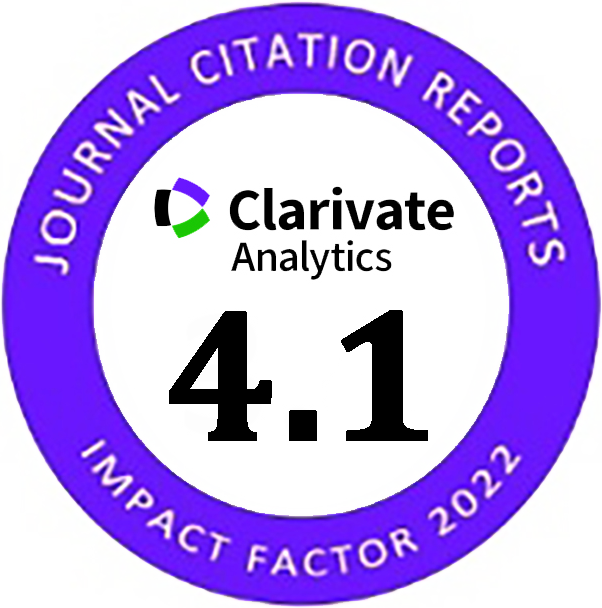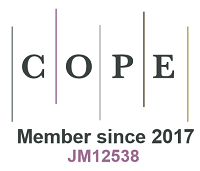Stress Path Behaviour and Friction Angle Transition Due to the Cyclic Loading Effects
Abstract
Doi: 10.28991/CEJ-2023-09-04-010
Full Text: PDF
Keywords
References
Nicholson, P. G. (2014). Soil Improvement and Ground Modification Methods. Butterworth-Heinemann, Oxford, United Kingdom. doi:10.1016/C2012-0-02804-9.
S Huat, B. B., Prasad, A., Kazemian, S., & Anggraini, V. (2019). Ground improvement techniques. CRC Press, London, United Kingdom. doi:10.1201/9780429507656.
Whitlow, R. (2001). Basic soil mechanics (4th Ed.). Pearson Education, London, United Kingdom.
Gosling, D., & Keeton, P. (2008). Problems with Testing Peat for Stability Analysis. Peat Seminar, The Geological Society, 11 March, 2008, Edinburgh, Scotland.
Boylan, N., & Long, M. (2014). Evaluation of peat strength for stability assessments. Proceedings of the Institution of Civil Engineers - Geotechnical Engineering, 167(5), 421–430. doi:10.1680/geng.12.00043.
Warburton, J., Holden, J., & Mills, A. J. (2004). Hydrological controls of surficial mass movements in peat. Earth-Science Reviews, 67(1–2), 139–156. doi:10.1016/j.earscirev.2004.03.003.
Boylan, N., Jennings, P., & Long, M. (2008). Peat slope failure in Ireland. Quarterly Journal of Engineering Geology and Hydrogeology, 41(1), 93–108. doi:10.1144/1470-9236/06-028.
Das, B. M. (2021). Principles of geotechnical engineering. Cengage Learning, Boston, United States.
Erken, A., Kaya, Z., & Şener, A. (2008). Post Cyclic Shear Strength of Fine Grained Soils in Adapazari–Turkey during 1999 Kocaeli Earthquake. 14th World Conference on Earthquake Engineering, 12-17 October, Beijing, China.
Ghadr, S., Assadi-Langroudi, A., & Hung, C. (2020). Stabilization of peat with colloidal nanosilica. Mires and Peat, 26, 1–13. doi:10.19189/MaP.2019.OMB.StA.1896.
Edil, T. B. (2003). Recent advances in geotechnical characterization and construction over peats and organic soils. Proceedings 2nd International Conference on Advances in Soft Soil Engineering and Technology, 2-4 July, 2003, Putrajaya, Malaysia.
Yamaguchi, H., Hashizume, Y., & Ikenaga, H. (1992). Change in pore size distribution of peat in shear processes. Soils and Foundations, 32(4), 1–16. doi:10.3208/sandf1972.32.4_1.
Cola, S., & Cortellazzo, G. (2005). The shear strength behavior of two peaty soils. Geotechnical and Geological Engineering, 23(6), 679–695. doi:10.1007/s10706-004-9223-9.
Mohamad, H. M., Zainorabidin, A., & Mohamad, M. I. (2022). Maximum Strain Effect and Secant Modulus Variation of Hemic Peat Soil at large Deformation due to Cyclic Loading. Civil Engineering Journal (Iran), 8(10), 2243–2260. doi:10.28991/CEJ-2022-08-10-015.
Mohamad, H. M., Adnan, Z., & Hassan, N. A. (2022). Influence of Cyclic Loading to the Post- Cyclic Shear Strength Behaviour of Peat Soil. Journal of Engineering Science and Technology, 17(4), 2997–3011.
Vucetic, M. (1994). Cyclic threshold shear strains in soils. Journal of Geotechnical Engineering, 120(12), 2208–2228. doi:10.1061/(ASCE)0733-9410(1994)120:12(2208).
Farrell, E. R., & Hebib, S. (1998). The determination of the geotechnical parameters of organic soils. Problematic Soils, 33-36.
Boulanger, R. W., Arulnathan, R., Harder, L. F., Torres, R. A., & Driller, M. W. (1998). Dynamic Properties of Sherman Island Peat. Journal of Geotechnical and Geoenvironmental Engineering, 124(1), 12–20. doi:10.1061/(asce)1090-0241(1998)124:1(12).
Ishihara, K. (1997). Soil behaviour in earthquake geotechnics. (1997). Choice Reviews Online, 34(09), 34-5113-34–5113. doi:10.5860/choice.34-5113.
Yang, J., & Sze, H. Y. (2011). Cyclic behaviour and resistance of saturated sand under non-symmetrical loading conditions. Geotechnique, 61(1), 59–73. doi:10.1680/geot.9.P.019.
Azhar, A. T. S., Norhaliza, W., Ismail, B., Abdullah, M. E., & Zakaria, M. N. (2016). Comparison of Shear Strength Properties for Undisturbed and Reconstituted Parit Nipah Peat, Johor. IOP Conference Series: Materials Science and Engineering, 160, 012058. doi:10.1088/1757-899x/160/1/012058.
Masirin, M. I. M., Ali, A. S. B., Mustapa, M. S., Rahman, R. A., Wagiman, A., & Aziz, M. I. (2020). Analysis of physical and microstructural properties on parit nipah peat particles as sustainable asphalt modifier. Materials Science Forum, Trans Tech Publications Ltd, 975, 197-202. doi:10.4028/www.scientific.net/MSF.975.197.
Zainorabidin, A., & Mansor, S. H. (2015). Comparative Study of Stress-Strain Characteristic of Peat Soil. Applied Mechanics and Materials, 773–774(February), 1448–1452. doi:10.4028/www.scientific.net/amm.773-774.1448.
Zainorabidin, A., & Mohamad, H. M. (2016). A geotechnical exploration of Sabah peat soil: Engineering classifications and field surveys. Electronic Journal of Geotechnical Engineering, 21(20), 6671–6687.
Huat, B. B. K., Prasad, A., Asadi, A., & Kazemian, S. (2014). Geotechnics of organic soils and peat. CRC Press, London, United Kingdom. doi:10.1201/b15627.
Zainorabidin, A., & Mohamad, H. M. (2016). Preliminary peat surveys in ecoregion delineation of North Borneo: Engineering perspective. Electronic Journal of Geotechnical Engineering, 21(12), 4485–4493.
O’Kelly, B. C. (2015). Atterberg limits are not appropriate for peat soils. Geotechnical Research, 2(3), 123–134. doi:10.1680/jgere.15.00007.
BS 1377-8:1990. (1990). Soils for civil engineering purposes. Shear strength tests (effective stress) (AMD 8263). British Standards Institution, London, United Kingdom.
Zolkefle, S. N. A. (2014). The dynamic characteristic of Southwest Johor peat under different frequencies. Master Thesis, University Tun Hussein Onn Malaysia (UTHM), Johor Bahru, Malaysia.
Knappett, J., & Craig, R. F. (2019). Craig's soil mechanics (9th Ed.). CRC Press, London, United Kingdom. doi:10.1201/9781351052740.
Lau, J. Z. E. (2019). Static and dynamic performance of biochar enhanced cement stabilized peat. Ph.D. Thesis, University of Cambridge, Cambridge, United Kingdom.
Basri, K., Zainorabidin, A., Mohamad, H. M., & Musta, B. (2021). Determining the peat soil dynamic properties using geophysical methods. Magazine of Civil Engineering, 105(5). doi:10.34910/MCE.105.8.
Mohamad, H. M., & Zainorabidin, A. (2021). Young’S Modulus of Peat Soil Under Cyclic Loading. International Journal of GEOMATE, 21(84), 177–187. doi:10.21660/2021.84.j2164.
Hao, R., Zhang, Z., Guo, Z., Huang, X., Lv, Q., Wang, J., & Liu, T. (2022). Investigation of changes to triaxial shear strength parameters and microstructure of yili loess with drying–wetting cycles. Materials, 15(1), 255. doi:10.3390/ma15010255.
Abdullah, H. H., Shahin, M. A., Walske, M. L., & Karrech, A. (2021). Cyclic behaviour of clay stabilized with fly-ash based geopolymer incorporating ground granulated slag. Transportation Geotechnics, 26. doi:10.1016/j.trgeo.2020.100430.
Wang, S. (2011). Post cyclic behavior of low-plasticity silt. PhD Thesis, Missouri University of Science and Technology, Rolla, United States.
Wang, S., Luna, R., & Onyejekwe, S. (2016). Effect of Initial Consolidation Condition on Post cyclic Undrained Monotonic Shear Behavior of Mississippi River Valley Silt. Journal of Geotechnical and Geoenvironmental Engineering, 142(2), 4015075. doi:10.1061/(asce)gt.1943-5606.0001401.
Yasuhara, K., Hirao, K., & FL Hyde, A. (1992). Effects of cyclic loading on undrained strength and compressibility of clay. Soils and Foundations, 32(1), 100–116. doi:10.3208/sandf1972.32.100.
Ho, J., Goh, S. H., & Lee, F. H. (2013). Post Cyclic Behaviour of Singapore Marine Clay. Le comportement post-cyclique de l’argile marine de Singapour. Proceedings of the 18th International Conference on Soil Mechanics and Geotechnical Engineering, 2-6 September, 2013, Paris, France.
Guo, L., Jin, H., Wang, J., & Shi, L. (2020). Undrained monotonic shear behavior of marine soft clay after long-term cyclic loading. Marine Georesources and Geotechnology, 38(7), 854–866. doi:10.1080/1064119X.2019.1636906.
DOI: 10.28991/CEJ-2023-09-04-010
Refbacks
- There are currently no refbacks.
Copyright (c) 2023 HABIB MUSA BIN MOHAMAD

This work is licensed under a Creative Commons Attribution 4.0 International License.






